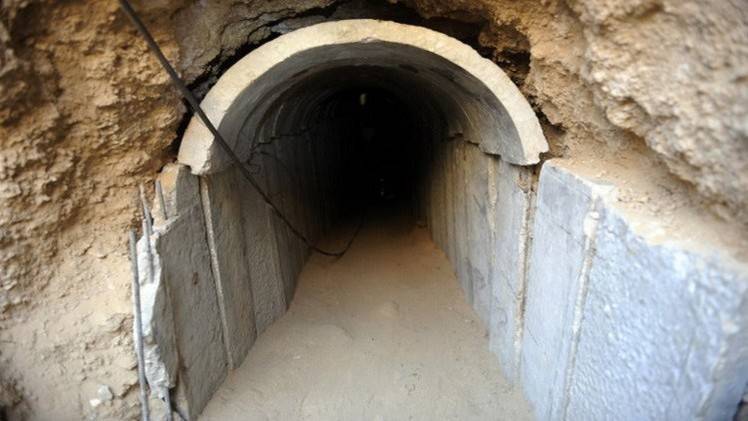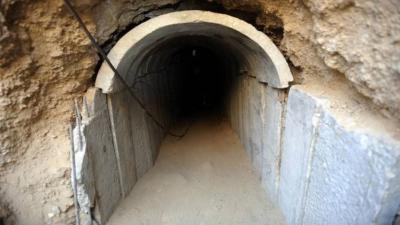Security sources indicate that what awaits Israeli ground forces in Gaza is a network of tunnels belonging to the Palestinian Islamic Resistance Movement (Hamas), extending for hundreds of kilometers and reaching depths of up to 80 meters. A hostage who was released described it as a "spider web." An expert characterized it as "ten times larger than the tunnels of the Viet Cong," or the National Front for the Liberation of South Vietnam. Informants from both the West and the Middle East noted that Hamas has various types of tunnels beneath the coastal Gaza Strip, which covers 360 square kilometers, including tunnels for attack, smuggling, storage, and operations.
An American official mentioned that the United States believes Israeli special forces will face an unprecedented challenge as they will need to engage Hamas while attempting to avoid killing hostages held underground. U.S. Defense Secretary Lloyd Austin also noted that the nine-month battle to recapture Mosul from ISIS might be easier compared to what the Israelis are expected to confront, as there will likely be "many explosives, many booby traps, and truly grinding operations."
Despite substantial Israeli investments in tunnel detection technologies, including an underground barrier outfitted with sensors called the "Iron Wall," it is still believed that Hamas has tunnels connecting it to the outside world. Following the escalation in 2021, Hamas leader Yahya Sinwar stated: "They started talking about 100 kilometers of Hamas tunnels being destroyed. I tell you that what we have in Gaza exceeds 500 kilometers. So if their narrative is true, they destroyed only about 20 percent."
Witness from the Hostages
Sinwar's claims could not be independently verified, and he is thought to have sought refuge in the tunnels prior to the anticipated Israeli ground offensive. However, estimates of tunnels extending for hundreds of kilometers are widely accepted among security analysts, despite the fact that the length of the besieged coastline does not exceed 40 kilometers. With Israel having complete control over the aerial and maritime entrances to Gaza and 59 kilometers of its 72-kilometer land border, with Egypt controlling 13 kilometers to the south, the tunnels provide one of the few means for Hamas to bring in weapons, equipment, and personnel.
While Hamas and other Palestinian groups remain tight-lipped about their networks, Yocheved Lifshitz, an 85-year-old Israeli hostage released this week, stated, "It looked like a spider web, so many tunnels, we walked kilometers underground." Hamas believes that, given Israel's military superiority in both air capabilities and armored military vehicles, the tunnels serve to diminish some of these advantages by forcing Israeli soldiers to maneuver underground in tight spaces that Hamas fighters know by heart.
An Israeli military spokesperson said Thursday, "I won't discuss the number of kilometers the tunnels extend, but it's a large number, dug under schools and residential areas." Palestinian Authority President Mahmoud Abbas urged the UN Security Council for an immediate ceasefire of the "aggression" on Gaza and to move towards a "political solution instead of military and security solutions."
Tunnel City
Israeli security sources state that intensive airstrikes have caused minimal damage to the tunnel infrastructure, as a Hamas naval unit managed to launch an attack from the sea this week targeting coastal residential areas near Gaza. Former Israeli army commander Amir Avivi explained: "Despite our intense bombardment for days, the Hamas leadership remains largely intact and able to issue orders and maintain control, even attempting to launch counterattacks." Avivi held significant positions, including Deputy Commander of the Gaza Division tasked with dealing with the tunnel issue.
He added, "There is a whole city beneath Gaza at a depth ranging from 40 to 50 meters. There are shelters, command centers, and storage, and they are connected to more than a thousand launch sites for rockets." Other sources estimate the depth of the tunnels at up to 80 meters. One Western security source remarked, "They stretch for miles. They are made of concrete and well constructed. Imagine they are ten times the size of the Viet Cong tunnels. They have had years and a lot of money to dig them."
Another security source from a neighboring country to Israel indicated that Hamas's tunnels from Egypt remain active. He clarified that "the supply chain is still operating unaffected these days. The network involved in facilitating coordination includes some Egyptian army officers. It is unclear if the Egyptian military is aware of this." Two security sources and a merchant in the Egyptian city of El-Arish reported that a small number of narrow and deep smuggling tunnels were still operational until recently between Egypt and Gaza, but they have significantly slowed since the outbreak of the conflict between Israel and the Palestinians. Egyptian officials have yet to respond to requests for comments. Egyptian President Abdel Fattah El-Sisi said Wednesday during a visit to military units in Suez that the military's role is to secure the Egyptian borders.
A Long Game
Hamas was established in Gaza in 1987, and it is believed to have begun digging tunnels in the mid-1990s when Israel granted the late Palestinian Liberation Organization leader Yasser Arafat some autonomy in Gaza. The tunnel network is one of the main reasons for Hamas's strength in Gaza compared to the West Bank, where settlements, military bases, and Israeli surveillance hinder the entry of anything from Jordan. Tunneling became easier in 2005 when Israel withdrew its soldiers and settlers from Gaza, and Hamas won the 2006 elections.
Shortly thereafter, Al-Qassam Brigades, Hamas's military wing, captured Israeli soldier Gilad Shalit and killed two others after digging a 600-meter tunnel to raid the Kerem Shalom base at the Gaza border. While military tunnels have remained discreet, smugglers in Gaza during that period boasted about their commercial tunnels that were barely hidden beneath the border with Rafah. The tunnels were about one meter wide and used crane motors to transport goods along sandy floors in fuel barrels.
Abu Qusai, who operates one of the tunnels in Rafah, mentioned that digging a half-mile tunnel takes three to six months and can yield profits of up to $100,000 a day. He stated that the most profitable materials are bullets, which cost $1 in Egypt but reach $6 in Gaza. He added that Kalashnikov rifles cost $800 in Egypt and sell for double that in Gaza. It is believed that Al-Qassam Brigades in 2007 brought their leader Mohammed Deif into Gaza through a tunnel from Egypt. Deif is the mastermind behind Hamas's attack on Israel on October 7, which resulted in 1,400 deaths and hostage-taking.
Chase in the Tunnels
Joel Roskin, a geomorphologist from Bar-Ilan University in Israel, stated that mapping the tunnel network accurately from the surface or space is challenging, adding that highly classified information is essential to create a three-dimensional map and visualize images. Among the elite units tasked with underground operations is Yahalom, a special forces unit from Israeli combat engineering, specializing in detecting, clearing, and destroying tunnels.
Earlier this week, Israeli Prime Minister Benjamin Netanyahu visited Yahalom fighters and told them, "I rely on you; the people of Israel depend on you." Israeli sources indicated that what awaits them is grave and that they face an enemy that has reorganized itself and learned from previous Israeli operations in 2014 and 2021. Former combat engineering chief Amnon Soferin warned: "There will be many booby traps. They have thermal weapons that they did not possess in 2021, which are more lethal. And I believe they have acquired many anti-tank weapon systems that they will attempt to use against armored personnel carriers and tanks." Soferin, who was also a former head of Field Information Administration in Mossad, added that Hamas would also attempt to capture soldiers.




